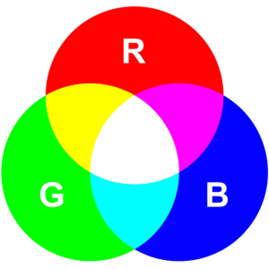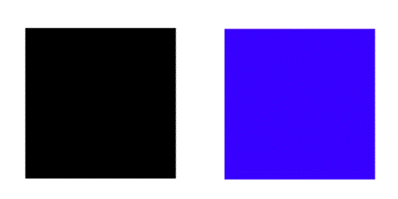In a world where so many of us are almost constantly staring at screens, there is a rising concern for the health of not only our eyes but also our bodies and minds.
Being in front of a computer screen can be unavoidable for many of us, but making conscious efforts for the betterment of your health is also necessary.
And this recognition has led to a major spike in the use of blue light glasses in recent years.
But how do blue light glasses work? And what if you got a brand new pair of them but find no change in your eye health? Is there a way to tell whether your blue light glasses are the real deal?
We always try and test things out before buying them, but how do you test blue light glasses?
If you, too, have hopped on the trend of blue light glasses but are unsure of whether they even block blue light, this article is for you. Keep reading to learn how you can be sure that your blue light glasses work.
What Are Blue Light Glasses?
Several studies have confirmed that the blue light emitted from screens can play a major role in causing improper sleep, eye strain, and headaches. And blue light glasses can help alleviate these symptoms. These glasses block blue light, which reduces the strain on your eyes while also improving the quality of your sleep.
However, some companies marketing their products as blue light computer glasses and blue light blockers sell products that are not effective in blocking blue light at all or block very little blue light.
Such products are just a cash grab and are meant to fool the customers to extort more money from them. So, how do we avoid falling prey to this?
One way is to test blue light glasses before buying them to make sure you are not being cheated of your money and health.
How To Test Blue Light Glasses
Not all blue light glasses will be of the same quality, so it is better to know how well your glasses block blue light before you buy them.
Conducting a blue light glasses test can seem tricky, but it's really not.
Blue light-blocking glasses block blue and green light. That is up to 550 nm on the visible spectrum. Such glasses have a slightly red or amber hue, so you can visibly tell if the glasses can block blue light. Such lenses are more commonly used for sleep improvement.
However, that is not a full-proof method and does not tell the effectiveness of the lenses either.
Here are a few other ways in which you can check if your glasses are blue light blocking or not:

1. RGB Color Wheel
This is perhaps the simplest test you can perform. Here's how to do it:
● Look at the wheel without your glasses.
● Now, put on your blue light-blocking glasses and look at the wheel again.
● Observe the color of the B section.
If your glasses are effective, the blue color will turn very close to the black color and will appear gray. The light blue or cyan color that is in between the blue and green color will also blend with the G section.

2. Black And Blue Square Test
● Look at the squares without your glasses on. They should appear as distinct blue and black squares.
● Put on your glasses.
● Observe the colors again.
When you look at the squares through your blue light glasses, the blue square will look dark gray, almost the same color as the black square. If not, they are not efficient enough in blocking the blue light.
3. Blue Light Pen Test
If you can get a blue light pen, you can use it to test your glasses.
The blue light pen emits blue light. Shine the light through your glasses and check to see if the light passes through. If you have blue light glasses, the light will not pass through.
4. Other Ways To Confirm
You can also perform an effectiveness test based on your own observation of how the glasses work and whether you see an improvement in your symptoms. Ask yourself the following questions:
● Do you observe a decrease in migraines/headaches?
● Has your sleep improved after wearing your blue light glasses before going to bed?
● Do you feel more comfortable looking at an LED screen while wearing your glasses?
If your answer to the above questions is yes, your blue light glasses are effective at blocking blue light.
5. Get It Checked Professionally
If you're not sure of the reliability of these tests, you can get your glasses checked professionally as well.
While the above tests will help you determine whether or not your glasses are blue-light-blocking or not, testing conducted by professionals will help you know how accurate they are.
Professionals can test how much blue and green light is being blocked using a visible spectrometer.
Visible light can be divided into seven colors - violet, indigo, blue, green, yellow, orange, and red (VIBGYOR). A visible spectrometer measures the absorption of one monochromatic frequency at a time and then sums up the results to give you the absorption levels of the glass.
This instrument will accurately tell how much green and blue light is blocked by your lens and give you an accurate result.
Ask The Brand For Blue Light Spectrum Report Data
Instead of checking the efficiency of your glasses or getting them checked professionally, you can ask the brand for lens data before buying them.
This will help ease your concerns so you won't have to worry about or spend money finding out whether your glasses block blue light or not.
To avoid worrying about your glasses, it is also better to purchase them from reputable opticians. They display testing results on their website and are often more open to sharing spectrum testing reports.
Conclusion
If you want to know if your glasses are blocking blue light, you now have a list of various tests you can perform to determine whether they work. However, it's still best to get confirmation from experts who will use a spectrometer to test your glasses.
Better yet, do your research and buy blue light glasses only from reputable opticians who are transparent about their manufacturing and testing.










